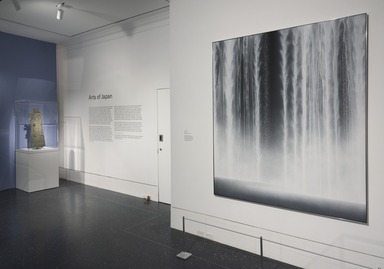

Arts of Japan, Thursday, October 24, 2019 through TBA (Image: DIG_E_2019_Arts_of_Japan_01_PS11.jpg Photo: Jonathan Dorado photograph, 2019)
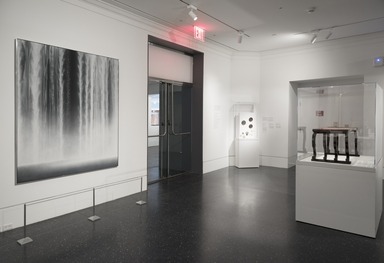
Arts of Japan, Thursday, October 24, 2019 through TBA (Image: DIG_E_2019_Arts_of_Japan_02_PS11.jpg Photo: Jonathan Dorado photograph, 2019)

Arts of Japan, Thursday, October 24, 2019 through TBA (Image: DIG_E_2019_Arts_of_Japan_03_PS11.jpg Photo: Jonathan Dorado photograph, 2019)
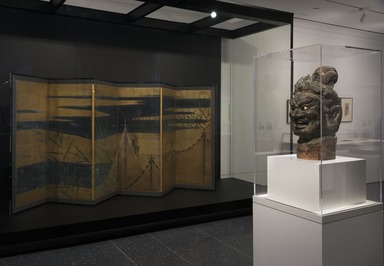
Arts of Japan, Thursday, October 24, 2019 through TBA (Image: DIG_E_2019_Arts_of_Japan_04_PS11.jpg Photo: Jonathan Dorado photograph, 2019)
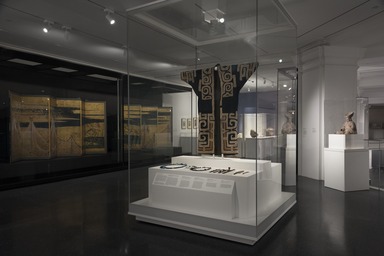
Arts of Japan, Thursday, October 24, 2019 through TBA (Image: DIG_E_2019_Arts_of_Japan_05_PS11.jpg Photo: Jonathan Dorado photograph, 2019)

Arts of Japan, Thursday, October 24, 2019 through TBA (Image: DIG_E_2019_Arts_of_Japan_06_PS11.jpg Photo: Jonathan Dorado photograph, 2019)

Arts of Japan, Thursday, October 24, 2019 through TBA (Image: DIG_E_2019_Arts_of_Japan_07_PS11.jpg Photo: Jonathan Dorado photograph, 2019)

Arts of Japan, Thursday, October 24, 2019 through TBA (Image: DIG_E_2019_Arts_of_Japan_08_PS11.jpg Photo: Jonathan Dorado photograph, 2019)
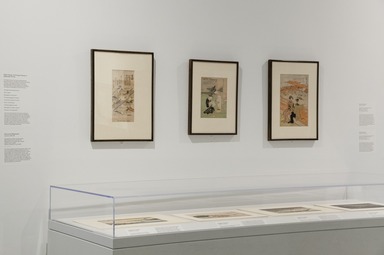
Arts of Japan, Thursday, October 24, 2019 through TBA (Image: DIG_E_2019_Arts_of_Japan_09_PS20.jpg Photo: Jonathan Dorado photograph, 2019)

Arts of Japan, Thursday, October 24, 2019 through TBA (Image: DIG_E_2019_Arts_of_Japan_10_PS20.jpg Photo: Jonathan Dorado photograph, 2019)
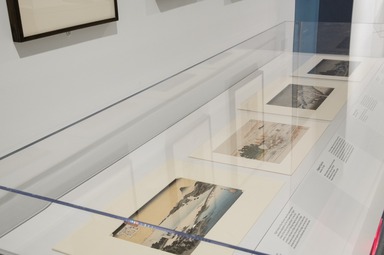
Arts of Japan, Thursday, October 24, 2019 through TBA (Image: DIG_E_2019_Arts_of_Japan_11_PS20.jpg Photo: Jonathan Dorado photograph, 2019)
Arts of Japan
-
Ancient Japan
Japan did not have a writing system until it began to adopt Chinese characters in the fourth century C.E. Much of what we know of Japan prior to that period derives from archaeological finds and from the traditions of the region’s native religion, Shintō.
Roughly ten thousand years ago, central Japan became one of the first regions in the world to develop ceramic technology. The term used today for Japan’s most ancient civilization is Jōmon, which means “cord-marked,” referring to the decorative textures created by rope pressed against the wet clay surfaces of the period’s pottery.
About 300 B.C.E., a variety of new technologies, including bronze and iron smelting, led to the start of a new era, known today as the Yayoi. Most artifacts dating to the subsequent period, called the Kofun (or Tomb Mound), have been found in elaborate burial sites for the ruling elite.
It is clear that, from a very early time, Japan was trading goods and ideas with the neighboring cultures of Korea and China. Nearly identical objects have been found in tombs of the Japanese Kofun period and Korean Three Kingdoms Period. What differentiates Japan in this early period is its spoken language and the development of Shintō, which remained the state religion of Japan until 1945. -
Temple Sculpture in Wood
The dominant indigenous religion of Japan is known as Shintō, or “Way of the Gods.” It developed from local beliefs in nature spirits and came to be associated with the country’s leadership, as the imperial family claims direct descent from Shintō deities. Shintō shrines, notable for their T-shaped torii gates, appear throughout Japan, especially near prominent natural features such as mountains and waterfalls.
Buddhism was first preached by Shakyamuni Buddha in India in the fifth century B.C.E. and evolved into diverse sects as it spread across Asia, each with its own interpretation of ancient teachings. After the Buddhist religion reached Japan in the sixth century C.E., schools such as the esoteric Shingon, the faith-based Pure Land, and the meditative Zen grew into wealthy institutions, wielding political influence and competing for patronage.
Elite families sponsored the creation of innumerable Buddhist temple and Shintō shrine complexes, and they filled the buildings with sculptures and paintings. In Buddhism, images of the Buddhas and other gods are viewed as part of prayer; in Shintō, the enshrined deity remains unseen. The many images displayed on the grounds of Shintō shrines are votive objects, donated by the faithful in times of need.
While stone and bronze had been the favored media for religious imagery in other parts of Asia, an abundance of large trees and expertise in carving and joinery led to an important tradition of carved wood sculpture in Japan. All of these wood sculptures were painted in bright colors and were installed in buildings made mostly of wood. -
Tradition and Innovation: Tea Taste in Japanese Ceramics
The ceramic objects in this case range in date from the 1200s to the 2000s, but they share traits that illustrate the continuity of Japanese pottery traditions. Japanese ceramicists were capable of making jewel-like pieces with thin walls and perfectly symmetrical forms, but they also made wares with intentional imperfections. Despite innovations in throwing clay on a wheel, some potters chose ancient hand-forming methods that result in heavy and/or lopsided pieces. Likewise, when applying glaze, they allowed for drips and other non-uniform surface coverage.
Such imperfect objects were made to be touched, particularly in the context of a traditional Japanese tea ceremony. The drinking of tea as part of a carefully orchestrated aesthetic experience developed in Japan in the sixteenth century. The host of a tea ceremony chose every implement with care, and the guests were expected to take the time to appreciate the details of the presentation. Under the guidance of tea masters, Japan’s elite strove to develop “tea taste,” the discernment of qualities that make objects appropriate for use in different types of ceremonies. Ceramics with an irregular shape and surface were thought to engage the senses more fully, but to the uninitiated, the distinction between beautiful flaws and ugly failures could be quite subtle. -
Ash and Clay
Ceramics is the art of combining earth and fire. In most cultures, progress in ceramic technology has been driven by potters’ desires to transform the materials they use: rough, baked clay becomes smooth, cool, and sometimes colorful, thanks to advances in chemistry and combustion engineering. In Japan, connoisseurs admired and commissioned thin porcelain wares with clear, bright glazes, but they also found beauty in ceramics that revealed their origins in the elements of earth and fire. A taste for rougher ceramics is one of the major features that differentiate the traditional culture of Japan from those of China and Korea.
Continuing a tradition of beautiful irregularity (illustrated in a nearby case), the contemporary vessels displayed here reveal the artists’ aims to create forms that mimic naturally occurring phenomena. In these examples, the materials of ceramics—clay, glaze, and the kiln fire—are not refined and transformed but rather celebrated in their “raw” state. For all of these pieces, the artists have manipulated their materials carefully, with an eye to creating effects that appear to have happened by chance. -
Contemporary Japanese Ceramics: Recent Acquisitions
The Brooklyn Museum was a pioneer in collecting ceramics by living Japanese masters, beginning in the 1970s with acquisitions of mid-twentieth-century wares by such artists as Hamada Shōji (1894–1978) and Shimaoka Tatsuzō (1919–2007). Although these artists were celebrated in Japan, most Western museums were focused on collecting ancient and historical materials at that time. The Brooklyn Museum acquired recently made ceramics as a complement to a larger collection of older mingei, or Japanese folk art, because several of the twentieth-century masters were interested in emulating and promoting mingei aesthetics. Of course, unlike most mingei artists, these potters did not work anonymously.
The Museum has continued to collect and display works by Japan’s ceramic artists, and the collection has grown to include a wide variety of styles and approaches. The objects shown here were purchased or donated in the past ten years; they represent the breadth and vitality of Japanese clay arts. We see both vessels and sculptures, many different approaches to decorating the clay surface, and the rise of female potters in a field once dominated by men. Many additional recently acquired objects appear in other displays in this gallery, a testament to the energy and generosity of local collectors of Japanese contemporary ceramics. -
Lacquerware
Lacquer is the term used broadly today for any substance that is painted over wood or other surfaces to create a hard, glossy, moisture-resistant coating. In the East Asian tradition, lacquer is plant-based, coming from the sap of a tree, and it is typically colored black or red. Japanese craftspeople have been working with lacquer since the Jōmon period (probably as early as 5000 B.C.E.). They have painted with it, carved it, and employed it as a surface for inlay. They have used it to cover wood, basketry, cloth, and paper. The light weight of lacquered objects makes the material ideal for personal adornments and table wares.
Lacquer is typically applied to a surface in thin layers, each of which takes time to dry. Most lacquered objects have many, many layers, requiring months or even years to complete. In some cases, layers of different colors are applied so the upper layers can be carved or rubbed away to reveal contrasting colors below. The most celebrated Japanese lacquerwares have metallic embellishments, either set into or applied onto the lacquered surface.
Long exposure to light causes lacquered surfaces to become cloudy or dull, and fluctuations in humidity can make lacquer crack. This presentation of lacquered objects will be changed on a regular basis so that the Museum can display these treasures while also protecting them for future generations. -
Woodblock Prints
In the Edo period (1603–1868), printed images became wildly popular among the growing middle classes in Japan’s urban centers. The market for prints remained strong through the Meiji period (1868–1912). Single-color printing from carved blocks had existed in Japan for centuries, but in the 1760s publishers developed the technology to produce full-color prints, using a different block for each color. The prints were designed by artists, who often signed their work, but these artists were part of larger production teams that included block cutters and printers, as well as the publishers who sponsored, promoted, and distributed the final product in the form of single sheets, multi-sheet series, and illustrated books.
Many of the color woodblock prints made in this period belong to a genre known as Ukiyo-e, or “Images of the Floating World.” They illustrate the major cities’ entertainment zones, known by the term “Floating World” because they provided fleeting moments of beauty and amusement for a price. Kabuki theaters and geisha houses were popular inspirations for prints that depicted favorite actors in specific roles and the loveliest women wearing the latest fashions. A related but separate genre, meisho, or “Famous Views,” offered glimpses of local industries and neighborhoods along with the natural beauty of Japan’s towns and landscapes. -
Art of the Ainu People
The Ainu people are indigenous to northern Japan and far-eastern Russia. Ainu culture, which evolved largely separately from the culture most people know as Japanese, has its own language, religion, and customs. In Japan, the northern island of Hokkaidō and parts of northern Honshū were once Ainu domains, trading with the rest of Japan but absorbing very little of that foreign way of life. Hokkaidō was annexed by Japan during the Meiji period (1868–1912) and the Ainu people forcibly assimilated into Japanese society. Today it is estimated that there are fewer than one thousand speakers of the Ainu language, but the Japanese government has begun to institute laws to protect and preserve the Ainu way of life.
Until the twentieth century, the Ainu people relied heavily on hunting and fishing, and many of their religious beliefs revolve around the natural forces at work in mountains and oceans. Ainu art consists largely of carved wood implements and clothing, decorated with abstract patterns that combine geometric and botanical forms. In Ainu art, animal imagery is rare, and human imagery is virtually unknown.
In 1911, the Brooklyn Museum’s first Curator of Ethnography, Stewart Culin, arranged for the purchase of large collections of Ainu artifacts from an American missionary, John Batchelor, who had spent more than sixty years with the Ainu, and from an anthropologist, Frederick Starr, who had organized the Ainu pavilion for the 1904 St. Louis Exposition. Culin also purchased pieces directly from Ainu people he met during a visit to Hokkaidō in 1912. The Museum’s collection is a mix of objects that were made for sale to early tourists and pieces that were likely used by their Ainu owners and then discarded during a period when the Ainu people were encouraged (by Japan and by missionaries like Batchelor) to reject their old traditions. The Brooklyn Museum now houses nearly one thousand Ainu objects and is unique among American art museums in presenting such large holdings of Ainu material. -
Woodblock Prints and the Kabuki Theater
In the Edo period (1603–1868), woodblock prints became wildly popular among Japan’s growing middle classes. Many of these prints belong to a genre known as ukiyo-e, or “images of the floating world.” They illustrate urban entertainment zones, where brothels, restaurants, and theaters provided fleeting moments of beauty and amusement for a price. At the center of these districts were Kabuki theaters featuring elaborate dance-drama productions based on tales from Japanese history and legend. Kabuki originated as street performances in the early 1600s, and even after establishing a formal style and format, it appealed to a much broader audience than classical Japanese theater, known as Noh.
Kabuki actors enjoyed an avid fan base. The most popular woodblock prints depicted these actors in their latest roles, serving as advertisements and souvenirs as well as influencing fashion and even politics. Because Japan’s leaders regarded Kabuki as irreverent and decadent, actor prints were carefully censored and sometimes banned entirely. -
Eight Views: A Chinese Theme in Japanese Prints
The “Eight Views of the Xiao and Xiang Rivers” became popular as a subject for poetry and painting in China in the eleventh century. The theme described eight different beautiful and moody moments that one might experience in the watery, mountainous landscape of Hunan Province. The Eight Views scenarios are:
Rain at night
Wild geese coming home
The evening gong at a temple
A mountain market in the mist
Snow in the evening
A fishing village at sunset
Moonlight on a lake in autumn
The return of a sailing ship
Like many other aspects of Chinese intellectual culture, this theme was borrowed and adapted by Japanese poets and painters and, later, printmakers. The prints on display are all from series that depict the Eight Views and adhere more or less to the atmospheric and temporal subjects, which are situated in Japan. Some capture the character of specific Japanese sites, and others focus on Japan’s cultural or sociological landscape. -
Ryukyuan Lacquerwares
The Ryukyu Islands lie to the south of Japan’s larger islands, stretching in a long line almost to Taiwan. The largest island is Okinawa, so the region and its people are often called Okinawan. Although they are now part of the nation of Japan, the people of the Ryukyus speak several other languages. For hundreds of years, a mostly autonomous kingdom based on Okinawa ruled the area, paying tribute to both Japan and China and benefiting from the islands’ location along major maritime trade routes.
There have been several distinctive art forms created on the Ryukyu Islands, but one of the most prized is decorated lacquerware. Furnishings and serving vessels, covered in multiple coats of smooth water-resistant lacquer, were prized possessions among the elite of Okinawa and were traded to China and Japan. -
The Painterly Pot
Most historical Japanese ceramics were made in workshops or factories. The decorators who applied designs on porcelains and other wares were often skilled draftspeople, but they worked anonymously and we assume that their work did not extend beyond ceramic decoration.
In the early 1700s, the artists Ogata Kōrin and Ogata Kenzan, brothers who were trained as painters, made an unusual leap into a new medium when they began to produce decorated pottery. Their ceramic designs resemble their paintings, using gestural brushwork and watery colors to depict nature in simplified forms. Unlike most other ceramic decorators, the brothers signed their work.
Some of the potters whose work is included here looked to Kenzan and Kōrin for inspiration. Others emulated Japanese ceramic traditions such as Shino, which often included passages of spontaneous brushwork. Later artists also responded to international trends in modern art and design. All of the varied examples shown here bring a painter’s touch to ceramic bodies.
-
August 21, 2019
Following a multiyear renovation and the reopening of the Arts of Korea collection, the Brooklyn Museum is pleased to unveil two new galleries highlighting its important and diverse collection of works from China and Japan. Opening on October 25, the Arts of China and Arts of Japan galleries will feature masterworks as well as rarely seen or never-before shown treasures from the Museum’s collection of Asian art. Both galleries will also highlight new acquisitions and contemporary works, connecting centuries of artistic practice through common themes and mediums. These galleries have been closed since 2013; the first phase of the reinstallation was unveiled in 2017, when the gallery for Korean art reopened, and will later be followed by galleries for arts of South Asia, Buddhism, Southeast Asia, and the Himalayas. This ambitious reinstallation project celebrates the immense diversity that has long existed within Asia while also demonstrating the exchange of goods and ideas across national boundaries.
The installation of the Brooklyn Museum’s Arts of China collection is organized by Susan L. Beningson, Assistant Curator, Asian Art. The installation of the Arts of Japan collection is organized by Joan Cummins, Lisa and Bernard Selz Senior Curator, Asian Art.
“The Brooklyn Museum is excited to present our Arts of China and Arts of Japan galleries, the newest in our ambitious reinstallation of our Asian art collection,” said Anne Pasternak, Shelby White and Leon Levy Director of the Brooklyn Museum. “Through historical masterworks and newly acquired contemporary pieces, we look forward to reshaping the ways in which visitors think about the long histories of artistic practice in China and Japan.”
The Arts of China
The Arts of China gallery highlights 5,000 years of Chinese artistic accomplishments, including bronzes, ceramics, painting, and selections from the Museum’s unrivaled collection of cloisonné enamels. The installation will include more than 130 works, many of which have not been on view in decades. Unique to this encyclopedic display of Chinese artworks is the inclusion of contemporary art. Since 2014, the Brooklyn Museum has acquired over fifty contemporary paintings and sculptures by artists of Chinese descent, including Sun Xun, Zheng Chongbin, Peng Wei, Tai Xiangzhou, Zhang Jian-Jun, and Bingyi, among others. The experimental ink paintings by these artists challenge and transform China’s traditional artistic practices, using them to respond to present day concerns such as urbanization, environmental degradation, and the rapid pace of China’s modernization. The contemporary works will be highlighted in a special presentation held in conjunction with the reopening of the Arts of Asia collection, with works from the collection rotating into the galleries on a regular basis.
On display in the main China gallery will be historical masterworks from the Museum’s collection, including the Yuan dynasty Wine Jar with Fish and Aquatic Plants, widely regarded as one of the finest examples of blue-and-white porcelains in the Western hemisphere; the Shang dynasty bronze ritual vessel (gong), whose design illustrates the spiritual transformation the ancient Chinese believed occurs when communicating with ancestors; and cloisonné enamels. The collection of cloisonné enamels, donated to the Museum as part of a major gift in 1909, is one of the finest of its kind in the world. The gallery is organized by thematic sections: Ancient China, Journey to the Afterlife, Reinventing the Past, Hidden Messages and Wordplay, Later Ceramics and Decorative Arts, and Art of the Scholar.
Arts of Japan
The Arts of Japan gallery will trace over 2,000 years of innovation in Japanese art, including Buddhist temple sculptures, Ukiyo-e prints, paintings, and lacquerware. Among the masterworks on display is an oversized painted wood head of a guardian figure from the thirteenth century, with bared teeth and glinting crystal eyes, that was meant to ward off enemies in a Buddhist temple. It features the energy and exaggerated musculature that typify the best sculptures of the Kamakura period (1185–1333). Also on display is a pair of gilded folding screens depicting fishnets hanging out to dry on an abstracted, grassy shoreline. Closely related to screens in the Japanese Imperial Household Collection, this pair has been recognized by the Japanese government, which sponsored its conservation in 1995. Upgrades to the gallery’s climate control and casework make it possible to show this important but fragile seventeenth-century painting in Brooklyn for the first time since it was restored.
The presentation will also feature contemporary ceramics that represent the cutting edge of ceramic achievement in Japan. By placing these contemporary pieces next to ancient works, the reinstallation illuminates points of continuity throughout the country’s ten-thousand-year history of advancements in ceramics. The Japan gallery is also organized by thematic sections: Ancient Japan, Temple Sculpture in Wood, Tea Taste in Japanese Ceramics, Ash and Clay, Contemporary Japanese Ceramics, Lacquerware, Art of the Ainu People, and Woodblock Prints.
The Arts of Japan gallery features a uniquely large display of Ainu artifacts. The Ainu people were an indigenous group that lived in northern Japan, where they developed a distinct culture and language from that of central and southern Japan. The Brooklyn Museum has a collection of Ainu wood carvings and costume elements that is unparalleled outside of Japan. Highlights include a handsome robe made from pieces of cotton imported from southern Japan. While the extensive use of cotton distinguishes this robe from the more common clothing made from elm bark, the network of spiraling decorative motifs is typical of Ainu ornamentation. The Museum hopes the presence of the Ainu collection inspires conversations about the ethnic and linguistic diversity within Japan, a diversity that is often overlooked by Western scholars.
The Brooklyn Museum has collected Japanese works of art since the early 1900s. Since its important holdings of Ainu objects were acquired in 1912, the Museum has continued to be a pioneer in the collecting of Japanese folk art and ceramics created by living masters. The Museum’s Arts of Japan collection is one of the largest sub-collections within the larger holdings of Asian art, consisting of roughly 7,000 objects. In order to provide greater access to these objects, as well as to protect the light-sensitive paintings, prints, lacquered objects, and textiles from extended exposure, displays will be changed on a regular basis. Visitors are encouraged to return to the galleries regularly to see new masterworks and experience the depth of the collection.
The reinstallation of the Arts of China collection is made possible by leadership support from the E. Rhodes and Leona B. Carpenter Foundation and the Freeman Foundation. Additional support for the Arts of Asia collection reinstallation is provided by the Andrew W. Mellon Foundation.
The reinstallation of the Arts of Japan collection is made possible by leadership support from Alan L. Beller, Collie and Charles Hutter, Karl and Jennifer Hutter, Katherine and Eric Mason, Claudia and Wilson Langworthy, and Barbara F. and Richard F. Moore. These generous gifts, and others, were made in honor of longtime Brooklyn Museum Trustee Leslie Langworthy Beller (1951–2017). Additional support for the Arts of Asia collection reinstallation is provided by the Andrew W. Mellon Foundation.
Arts of China
View Original




















